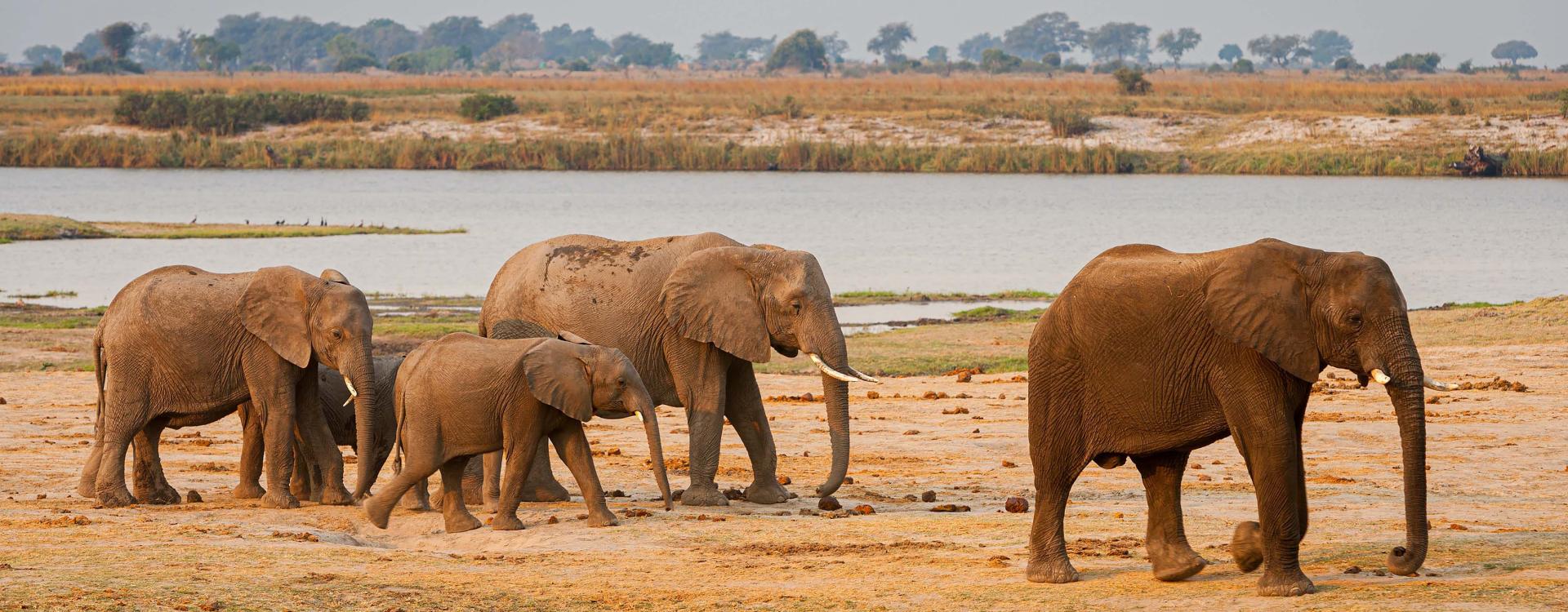
Small herd of Elephants in National Park. Photo Credit: © Chris Stenger | Unsplash
An international study led by a UC Santa Barbara researcher offers a promising solution. Using DNA from large herbivore dung, scientists uncovered an entire network of gastrointestinal parasite sharing among 17 wild and domestic herbivore species. The paper, published in the Proceedings of the Royal Society B, sheds light on patterns of parasite diversity at the wildlife-livestock interface. In particular, the authors found that gastrointestinal parasites tend to infect hosts with similar gut types and evolutionary history, and that domestic animals are central players in this network.
Lead author Georgia Titcomb was a graduate student at UC Santa Barbara when she first started getting her hands dirty with giant mammal poop. Working on her dissertation, she wanted to understand how large, wild and domestic animals might be sharing parasites at water sources where they gather. But she grew increasingly frustrated using typical methods of manually identifying and counting parasite eggs.
Looking for a better way, Titcomb reached out to co-author Rob Pringle at Princeton University, who had used DNA in herbivore dung to figure out their diets. The team used DNA metabarcoding — a technique that amplifies a short strand of DNA in a sample and matches it to sequences in a genetic database — to figure out the presence and diversity of parasites in 17 large herbivore species found at Mpala Research Centre in central Kenya.
The authors tested several variables — like a host’s body size, diet and social group size — and found a few key patterns. “The most important factor was the evolutionary history of the host,” Titcomb explained. “More closely-related hosts had more closely-related parasites.” Additionally, the structure of the host’s gut — the parasite’s habitat — could determine the community of parasites found there.
Mammalian herbivores fall into two main groups: those that digest plant matter in their foregut, and those that digest plant matter in the hindgut. Foregut fermenters — like cows, antelopes, buffalos and giraffes — are highly efficient at extracting nutrients from plants because they have an intricate stomach. The authors suspected that these multi-chambered stomachs may provide a lot of habitat complexity for gut parasites. As a result, these animals might have a different array of parasites than hindgut fermenters — such as zebras, donkeys, elephants and warthogs — which have a long colon where they absorb most nutrients.
The authors found genetically similar parasites in very different groups of animals — like warthogs, zebras and elephants — so they suspect gut type is responsible for a considerable amount of this variation.
One conclusion the authors hadn’t expected turned out to be rather important. “We found that several livestock species were really embedded in this parasite-sharing network,” Titcomb said. “Camels, cows and donkeys each shared parasites with multiple wildlife species.”
Accounting for the important role livestock play in these networks is crucial to planning for the future. “The parasites of these animals are important influences on their health and fitness, which is a potential problem for conservation and for human livelihoods insofar as wildlife can transmit disease to livestock.”
The authors think their findings will be important for livestock management. A proper understanding of the factors that influence these parasite networks is crucial for designing effective conservation plans and anticipating and managing disease outbreaks, Pringle added.
In the future, Titcomb expects that parasite DNA metabarcoding will be an important tool for parasitologists and disease ecologists as they study infections across changing landscapes. “I think the coolest thing is that we can now take this teeny tiny bit of DNA, totally non-invasively, and be able to unravel an entire world of parasites cheaply and efficiently for hundreds of samples,” she said. This provides unprecedented power to link animals by their shared parasites, to study them over time and to look at how these dynamics change in different contexts.